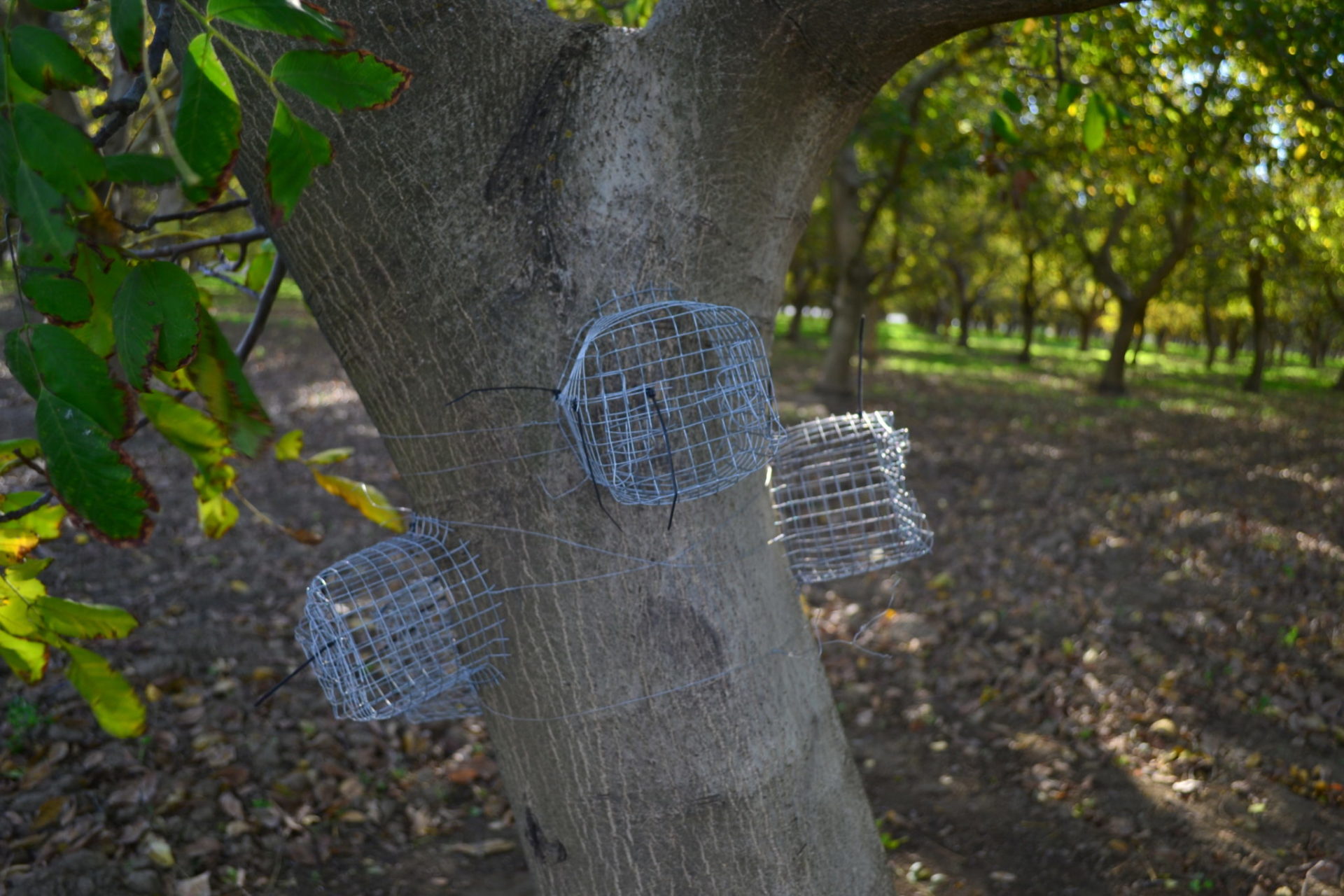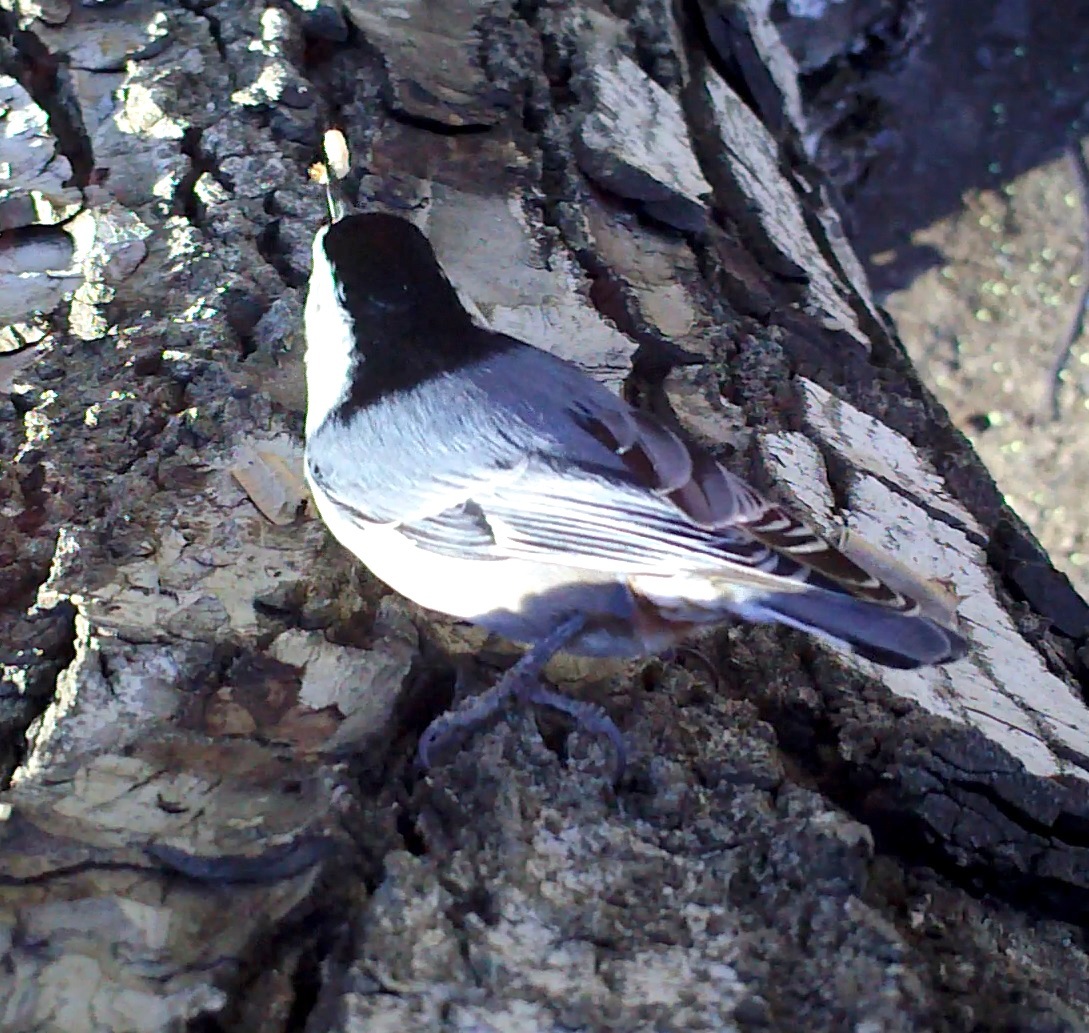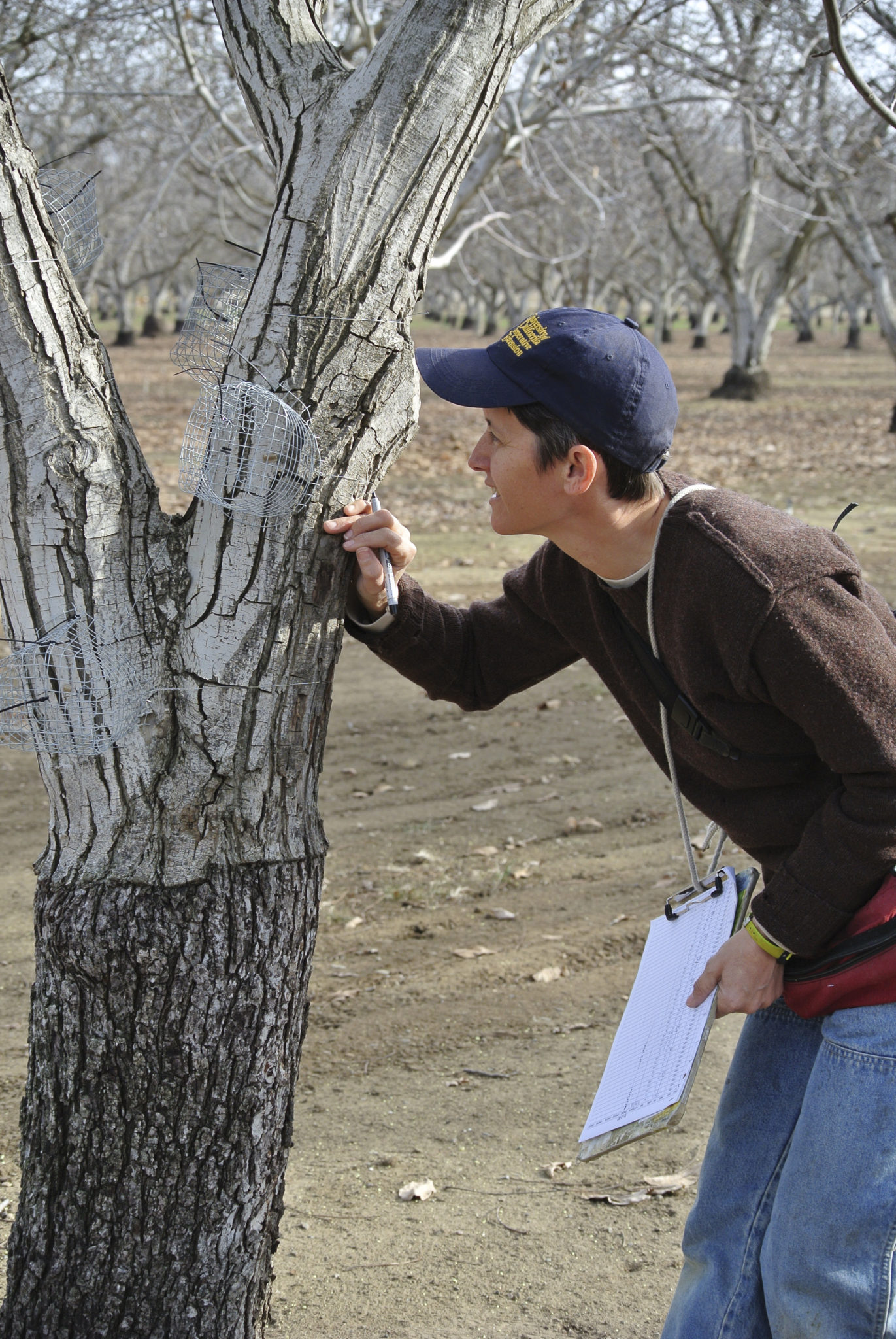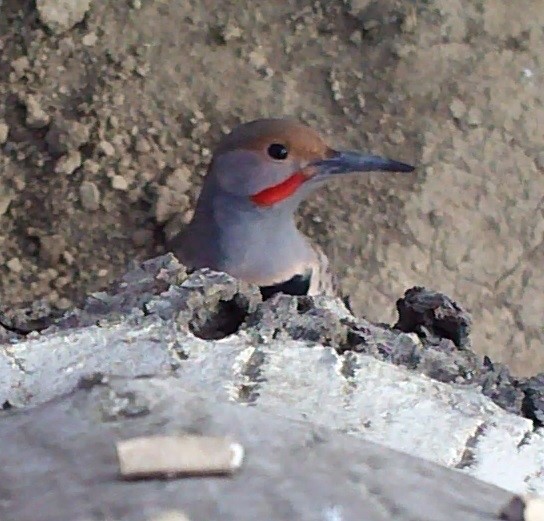
Sounds of spring are in the air with birds singing to claim and defend territories during nesting season, which generally runs from February to mid-August. During this time, parents are hunting insects with a vengeance, feeding hungry baby birds thousands of bugs, a high energy food source needed for rapid growth. This is good news for farmers who benefit from pest control by birds in many locally grown crops, including alfalfa, strawberries, and apples. Adding to that growing list of crops where birds have been shown to provide beneficial pest control services are walnuts, where we found they help control the key codling moth pest.
Codling moth are highly damaging to walnut crops because the larvae feed on developing nuts, causing significant yield and quality losses if left uncontrolled. Adult moths become active in the spring, have three to four generations per year, then go dormant during wintertime, hibernating as larvae in protected areas, like bark crevices. During the growing season, codling moth are challenging to control because the larvae burrow and feed inside the nuts, keeping them safe from natural enemies and insecticides. During the wintertime larvae are more vulnerable to predators, offering opportunities for encouraging biocontrol by natural enemies, including insectivorous birds.
To find out the potential for bug-eating birds to help control codling moth in walnuts, we monitored bird activity in 20 different walnut orchards in the Sacramento Valley during the wintertime. Our focus was on birds that search for insect prey in tree bark as they travel up and down tree trunks, pecking and flaking bark with their beaks, looking for bugs. The most abundant insectivorous birds that we found with this feeding behavior included woodpeckers, flickers, bushtits, and nuthatches, as well as families of oak titmouse that chattered and called to one another as they moved through orchards.
To measure the impact of bird predation on codling moth control, we obtained larvae from the USDA lab in Parlier, CA, where they maintain a colony for research purposes. The larvae were coaxed to spin cocoons in pieces of corrugated cardboard and go dormant by manipulating light and temperature in growth chambers where they were reared. Armed with bags of hibernating larvae, we set out in orchards and glued them individually on tree trunks. Some larvae were available to predators, others had cages over them to prevent bird predation, serving as the control group. Field cameras were set up to track avian predators at work.

About a month later, we checked for predation and found that 35 percent of the sentinel codling moth larvae were eaten when exposed to birds. Photos of nuthatches and Nuttall’s woodpeckers suggest that these birds are having the greatest impact on pest control in walnut orchards. We also found that at least another 11 percent of larvae were preyed on by insect predators and parasitoid wasps, for a total of 46-percent control by natural enemies. This reduction in larvae during the winter months by natural enemies likely helps reduce the codling moth springtime flight, helping to reduce pest pressure during the growing season.
We also discovered that the driver behind bird abundance and diversity on farms was the presence of natural habitat near and on farms, including hedgerows of shrubs, tree-lines, and remnant riparian vegetation. Orchards with bare or weedy field margins, especially in areas with no nearby habitat had few birds. The more habitat around farms, the more beneficial birds were found in orchards, leading to better biocontrol of codling moth pests. Field edge habitat increased bird abundance on farms up to ten fold and the number of species by five-fold.
Birds naturally forage in croplands because in many cases it is among the only remaining available habitat, especially in intensively farmed areas like the Central Valley. Increasing bird activity and pest control benefits can be achieved by planting habitat in and around farms. For California, this includes native shrubs like California lilac (Ceanothus), redbud, coffeeberry, Toyon, coyote brush and elderberry that are best adapted to the area. Field edge habitat does not appear to attract more pest birds, like starlings and blackbirds, that feed on seed crops. These flocking species seem to be more attracted to crops and structures, like warehouses and corrals, than field edge habitat, and they are more likely to be on farms with no habit. For example, studies have shown that bird abundance and feeding damage to strawberry crops are lower on farms with more surrounding natural habitat.

Some songbirds, like finches, are beneficial when they feed on bugs in the springtime, then become pests themselves later in the season when they feed on seed crops or ripening fruit. Learning to know the seasonal habits of birds and when to encourage activity and when to discourage them is important to harness their pest control services. When birds are damaging crops, deterrents like netting, reflective tape, and hazing can help manage bird pests. The ‘inflatable waving man’ has also been shown to scare birds away from cereal grain research plots at the UC Tulelake Research and Extension Center. The exciting news is that researchers are working now more than ever to figure out the best ways to manage pest birds while attracting beneficial birds on farms.
Bird abundance and diversity is declining locally and worldwide due to habitat loss and we are losing a valuable ally in helping to control crop pests. Adding habitat on farms makes a difference by providing birds a safe place to forage, rest, and nest, benefiting birds and farmers. For more information on habitat plantings on farms, contact your local Resource Conservation District.
Watch a Nuttall’s woodpecker eating our experimental codling moth larvae in a walnut orchard: http://youtu.be/xKEO8WvBv_Q (video by S. Heath.)
This article is based on research published in the Ecosphere, the journal of the Ecological Society of America. The full report can be found at http://esajournals.onlinelibrary.wiley.com/doi/full/10.1002/ecs2.2884











